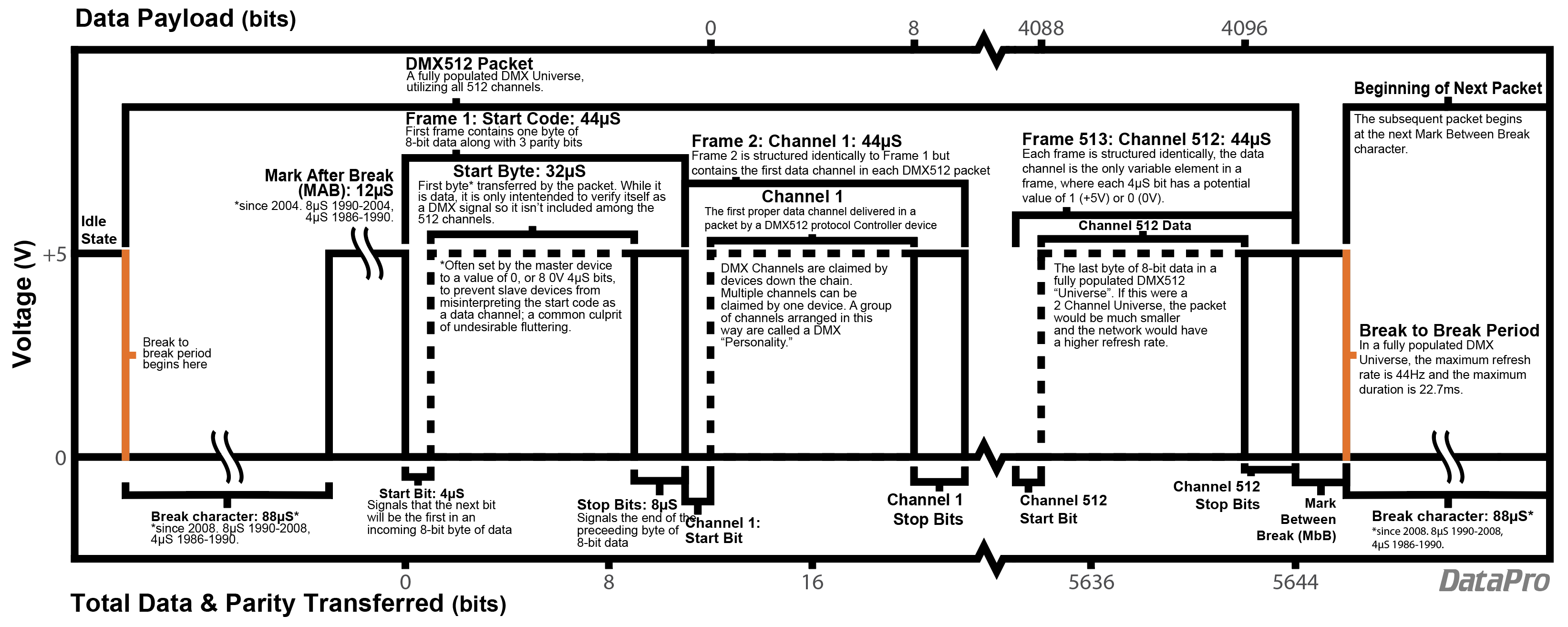 While DMX cables and XLR cables may appear similar or sometimes even identical, their usage and specifications are markedly different.
While DMX cables and XLR cables may appear similar or sometimes even identical, their usage and specifications are markedly different.
DMX cables are specifically designed for digital communication, allowing for the control of lighting fixtures, while XLR cables are used to carry analog audio signals. In this article, we'll take a closer look at the characteristics, applications, and proper usage of DMX and XLR cables. Whether you're a sound engineer, lighting designer, or musician, this information will be valuable in ensuring a smooth and successful setup.
What are XLR Cables?
XLR is a type of connector used for professional audio applications. Its most common configuration is a three-pin cable used to carry balanced audio.XLR Connectors
XLR connectors come in several variations. The 3 pin, 4 pin, and 5 pin configurations are the most common while some more unusual XLR connectors have up to 10 contacts. The female ends of these circular connectors are fitted with a locking tab that prevents unintended disconnection.What are XLR Cables Used for?
XLR cables are used mainly for professional audio applications. Most microphones and some loudspeaker systems use XLR cables. Another common application is power cables for lighting used in film and photography.Balanced Audio
Professional microphones typically use XLR as a connector for its ruggedness and ability to transmit a balanced audio signal.Stereo Microphones
While three pin XLR cables are by far the most commonly produced XLR microphone cables, five pin XLR microphone cables do exist and are usually used in conjunction with stereo microphones.What are DMX Cables?
DMX Cables are a shielded 4 Conductor assembly that uses a type of XLR connector that is not commonly used for microphones or audio in general. It is primarily found on DMX cables which deliver a digital signal used to control many types of devices. DMX cables are the physical layer through which a DMX512 network communicates.Related Products:
Don't See Exactly What You're Looking For?
Our experienced team of Custom Cable Technicians will build it for you.
Our experienced team of Custom Cable Technicians will build it for you.
What are DMX Cables Used for?
DMX cables are used to control stage lighting and special effects at concerts and other events. The cables are used to send signals between equipment using a communication protocol called DMX512.What Connectors do DMX cables use?
DMX cables use the same 5 pin connectors found on 5 pin stereo XLR cables. While most devices generally only use 3 pins (data positive 1, data - 1, and ground), the specification does require the additional unused data channels in all DMX cable assemblies.What is the DMX512 protocol?
DMX cables are used to control stage lighting and special effects at concerts and other events. The cables are used to send signals to equipment downstream using a communication protocol called DMX512.What does DMX512 stand for?
DMX stands for digital multiplex and 512 is the maximum number of bytes a controller unit can deliver per packet to each outgoing channel or "universe" as they are called.What is a DMX Universe?
A DMX universe consists of one controller and anywhere between 1 and 32 slave devices each of which has an input and through connector. The last device on the daisy chain must have a 120 Ω resistor shorted to the data pair to prevent unwanted reflections that distort the incoming data yet to reach the final device.How Does DMX512 Work?
Each slave device reserves a number of unclaimed bytes and sends the packet downstream. If the universe uses less than 512 bytes in total, the packet shrinks and the refresh rate speeds up. At full capacity, the refresh rate is 23ms, or 44Hz, which can be prohibitively slow if the network is intended to synchronize to music. Each byte contains only 8 bits, meaning any parameter that requires more than 256 possible positions must reserve another byte, further increasing the packet size.
Does DMX support two-way communication?
The protocol supports one-way communication only. DMX512 is an asynchronous unidirectional serial communication medium. While there is a positive and negative data channel in each cable, the data travels in one direction only. Much like an analog balanced audio cable, oddly enough, the negative channel on a DMX cable carries an inverted copy of the positive signal to reduce noise.How do DMX Lighting Controllers work?
While the official protocol itself has not been updated significantly since the 90s, current implementations have overcome some of these limitations by building controllers that can direct multiple networks and secondary controllers that act as both controller and slave devices.What's the Difference Between XLR and DMX?
DMX cables use XLR connectors but the wire demanded by the protocol is specific to DMX whereas the wire for XLR cables has no such requirement.Applications of XLR and DMX Cables
A major difference between the two cables is application. XLR cables are used for audio and sometimes power while DMX cables are used for lighting, lasers, and other special effects used in live performances.Three Pins or Five Pins?
XLR cables typically have 3-5 pins. DMX Cables, on the other hand, always have five pins. Because five pin stereo XLR microphone cables, however rare, do exist, relying on pin count alone is not the best identifier.XLR Wire vs DMX Wire
A sure-fire way to tell the difference between a 5 pin stereo XLR microphone cable and a DMX cable is to examine the wire markings. DMX wire must have a 120 Ω impedance to satisfy the DMX512 specification. Genuine DMX cables are marked "120 Ω" and usually "DMX" as well. The impedance of microphone wire varies but is usually significantly higher.What Can Go Wrong?
If you attempt to use a 5 pin XLR microphone cable to connect devices with DMX ports, you may experience intermittent errors and other unexpected behaviors. These errors will prevent lights and other devices from responding properly to commands from the master device. For lights and lasers, this problem could exhibit itself as rapid flashing or colors changing unexpectedly or out of sync.
Learn more about cabling and connectivity
Check out our comprehensive Tech Info page for a selection of informative articles!
Check out our comprehensive Tech Info page for a selection of informative articles!








